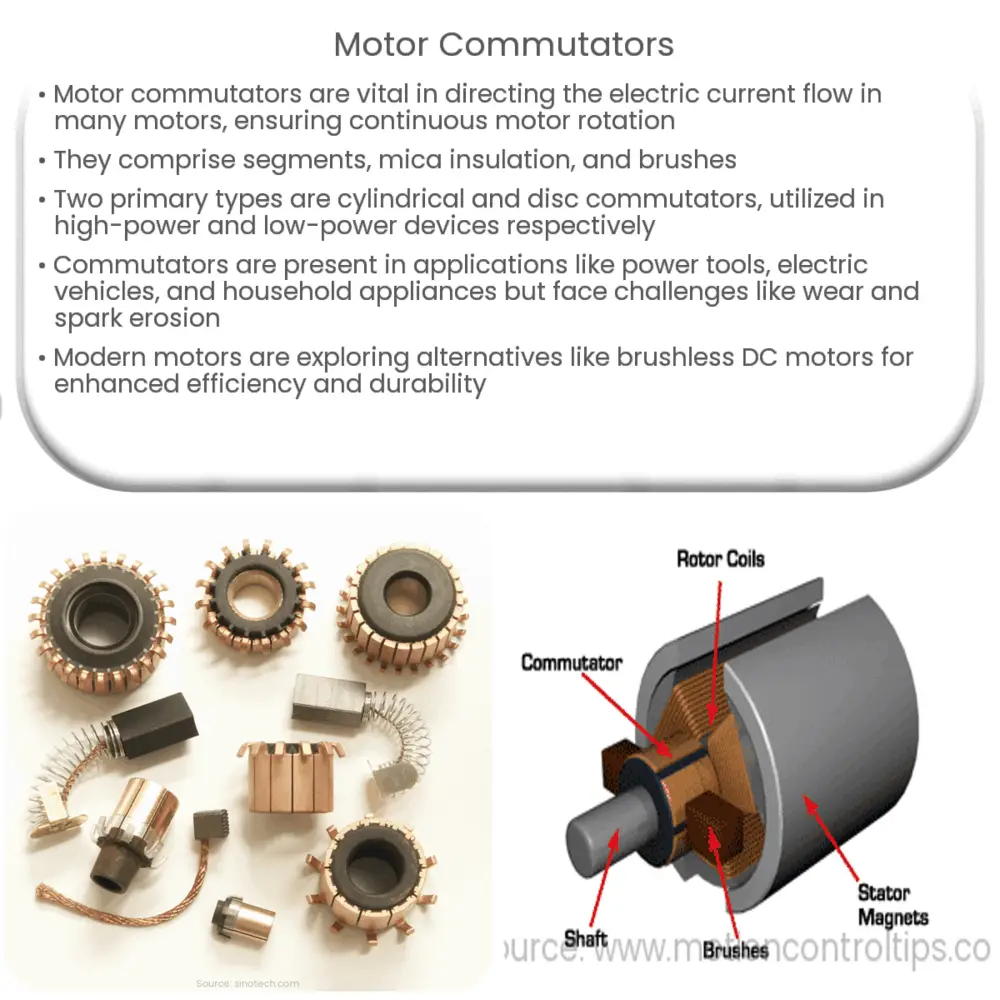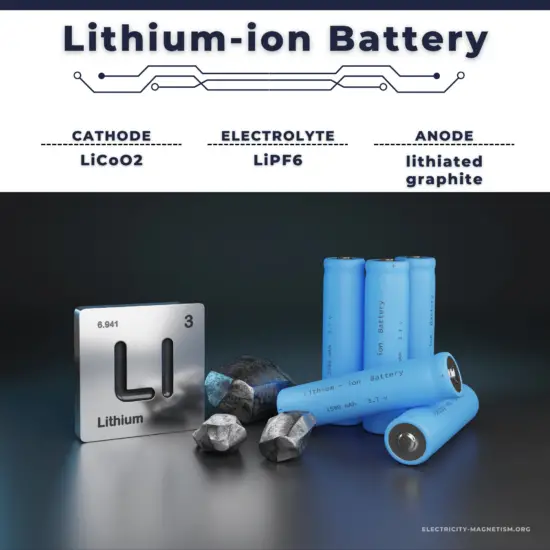Explore the critical role of motor commutators in electric motors and generators, their types, applications, challenges, and modern alternatives.
Understanding Motor Commutators
A motor commutator is a crucial component in many types of electric motors and generators. As the name implies, it “commutates” or switches the direction of electric current. In simple terms, a commutator ensures that current in the rotor or armature of a motor flows in the right direction. This article will delve into the details of how motor commutators work, their types, and some notable applications.
Function of Motor Commutators
The essential function of a motor commutator is to switch the direction of the electric current as it moves through the motor or generator. This is necessary because the current must always flow from the positive to the negative side. As the motor’s rotor or armature spins, the commutator rotates, ensuring the current always flows in the correct direction. This results in the continuous rotation of the motor.
Components of a Motor Commutator
The basic components of a motor commutator include:
- Commutator segments: These are the parts of the commutator that connect to the motor’s armature. They are usually made of copper to conduct electricity effectively.
- Mica insulation: This is the insulating material placed between the commutator segments to prevent electrical shorts.
- Brushes: The brushes are the parts of the motor that touch the commutator, allowing the current to flow into the commutator and then into the armature.
Types of Motor Commutators
There are two main types of motor commutators:
- Cylindrical or Drum Commutators: These are the most common type of commutators. They consist of a cylinder made up of multiple segments, typically copper, which are separated by a thin layer of insulating material. Cylindrical commutators are primarily used in motors that require high power and speed, such as those found in power tools and electric vehicles.
- Disc or Face Commutators: These are less common and consist of a flat disc with radial segments. Disc commutators are typically used in low power motors and generators, such as those found in small appliances and some toys.
Applications of Motor Commutators
Motor commutators are widely used in a variety of applications. In the industrial sector, they are essential for the operation of machines such as power tools, blowers, pumps, and conveyors. In transportation, they are used in electric vehicles and train traction motors. Additionally, they find applications in household appliances, like mixers, fans, and washing machines, where they ensure efficient operation and power consumption.
Motor Commutators in Different Types of Motors
Motor commutators are utilized in different types of motors based on the requirement:
- Direct Current (DC) Motors: In DC motors, the commutator is an integral part, as it helps to switch the direction of the current, thereby ensuring that the motor rotates continuously. It serves as a mechanical rectifier to convert the alternating current in the armature windings into direct current.
- Universal Motors: Universal motors can operate on both AC and DC power sources. They use commutators to convert AC to DC within the motor, allowing them to run on any power supply.
Challenges with Motor Commutators
Despite their critical role, motor commutators are not without their share of challenges. Some of these include:
- Wear and Tear: Over time, the brushes rubbing against the commutator cause wear and tear, which may lead to motor failure if not addressed.
- Spark Erosion: During operation, the commutator can produce sparks, leading to erosion. This can degrade the commutator’s performance over time.
- Maintenance: Motors with commutators require regular maintenance to ensure that the brushes and the commutator are in good working condition.
Alternatives to Motor Commutators
In light of these challenges, many modern motors are transitioning to designs that do not require commutators. One notable example is the brushless DC motor, which uses a combination of permanent magnets and electronic switches to change the direction of the current, thereby eliminating the need for a commutator and brushes. This leads to longer life, lower maintenance, and improved efficiency.
Conclusion
Motor commutators play a fundamental role in the operation of various types of motors, enabling the flow of electric current in the correct direction and thus driving motor rotation. They are found in a wide range of applications, from industrial machinery to household appliances and electric vehicles. However, despite their importance, they do have certain drawbacks, including wear and tear and the need for regular maintenance. As technology advances, alternatives like brushless DC motors are becoming more popular, offering increased longevity and reduced maintenance requirements. Yet, the impact and significance of the humble motor commutator cannot be overstated in our everyday life.




